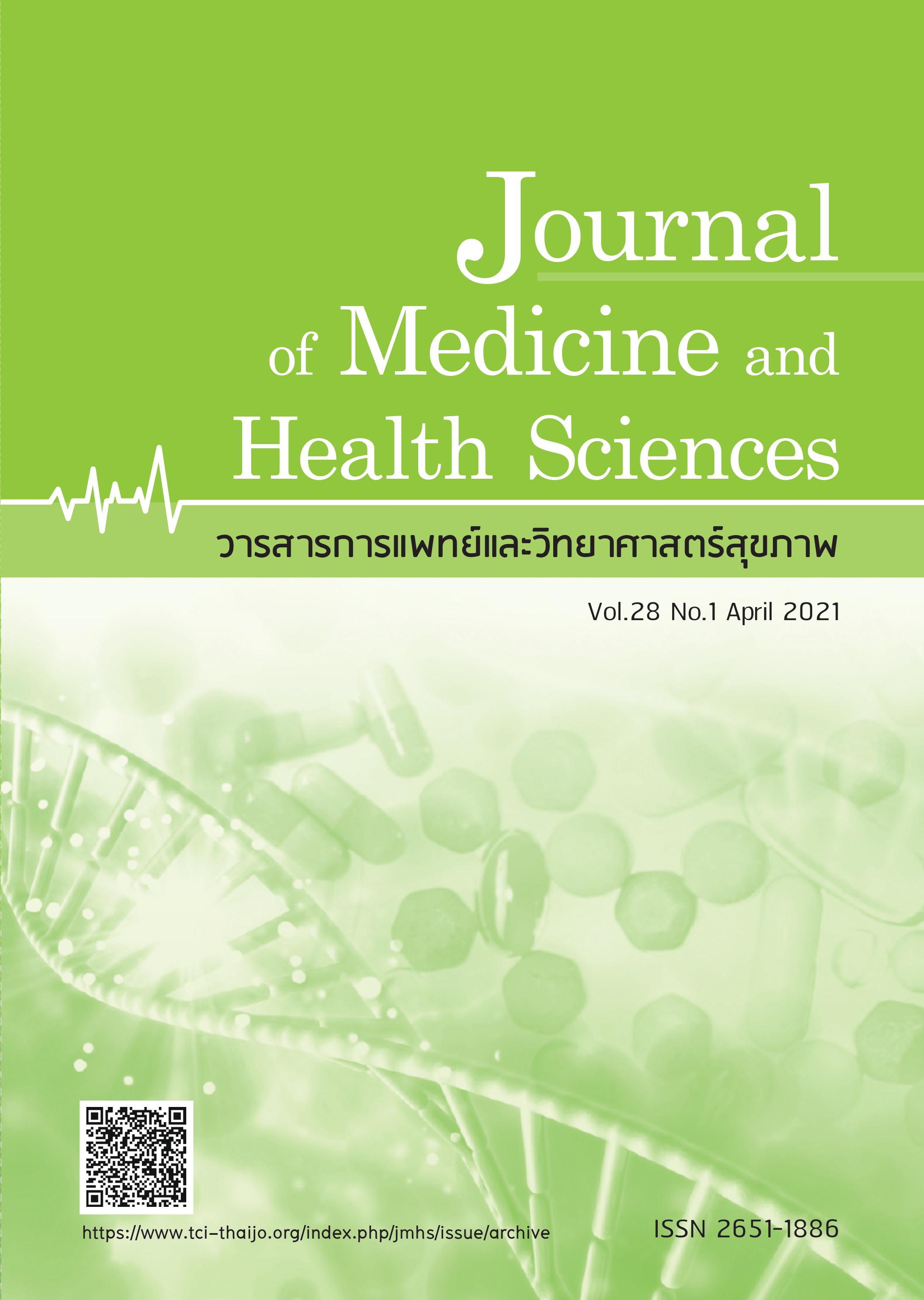Reliability of the Dee method for confirming carinal position in anteroposterior and posteroanterior chest films
Keywords:
chest film, film quality, Dee method, carina positionAbstract
Carina is a radiological landmark to confirm the proper position of the tube and line placement in the thorax. The Dee method can be used to approximate the carinal position when it is not visualized in a chest film. Chest films in intubated patients are almost always obtained with AP projection rather than PA projection and a poor chest X-ray technique is common. This study aims to determine the reliability of the Dee method for confirming the carinal position in AP and PA chest films. The correlation between chest film quality and the reliability of the Dee method was assessed. We identified 108 patients with AP chest films were available for review from June 1 to July 2, 2019. All patients had PA chest films three months apart. This study collected the age, gender, chest film quality, and measuring the distance between the visualized carina and carinal position identified by the Dee method. A total of 216 chest films from 55 males (50.9%) and 53 females (49.1%) were reviewed. The mean age of the patients were 65.71± 15.41 years. Approximately 64% and 44% of chest films in PA and AP views were good quality. The distance between the visualized carina and carinal position identified by the Dee method from PA and AP chest films were 11.38+ 7.31 mm and 11.36+6.73 mm, respectively. The mean difference was 0.02 mm (95% CI =1.51-1.45, p-value 0.97). The Dee method in the AP view cannot be substituted with the PA view from the Bland-Altman plot. Using 10 mm as the acceptable distance between the visualized carina and carinal position identified by the Dee method, the difference in reliability was 0.26 between PA and AP view, 0.40 in good quality films and 0.14 in poor quality films. Moreover, chest film quality showed a significant correlation with the Dee method of reliability in PA chest films. In conclusion, there is no difference in measuring the carinal position from the Dee method in both the AP and PA chest films. A good quality PA film can increase the reliability of the Dee method for carinal prediction.
References
2. Khan A, Al-Jahdali H, Al-Ghanem S, et al. Reading chest radiographs in the critically ill (Part I): Normal chest radiographic appearance, instrumentation and complications from instrumentation. Ann Thorac Med 2009;4:75.
3. Stonelake PA, Bodenham AR. The carina as a radiological landmark for central venous catheter tip position. Br J Anaesth 2006;96:335-40.
4. Yoon SZ, Shin JH, Hahn S, et al. Usefulness of the carina as a radiographic landmark for central venous catheter placement in paediatric patients † †Presented, in part,
at the 2005 Annual Meeting of European Society of Anaesthesiologists, Vienna, Austria. Br J Anaesth 2005;95:514-7.
5. Mehta Y, Sharma J, Gupta MK. Textbook of critical care including trauma and emergency care. First edition. New Delhi: Jaypee, The Health Sciences Publisher; 2016. p.1060.
6. Min-Hsin Huang, Zih-Yun Ting, Shu-Mei Guo. Carina detection on chest radiography. International Conference on Orange Technologies [Internet] 2013 [cited date 1 Sept 2019]. Available at: http://ieeexplore.ieee.org/document/ 6521174/.
7. Chen S, Zhang M, Yao L, et al. Endotracheal tubes positioning detection in adult portable chest radiography for intensive care unit. Int J CARS 2016;11:2049-57.
8. Lai V, Tsang WK, Chan WC, et al. Diagnostic accuracy of mediastinal width measurement on posteroanterior and anteroposterior chest radiographs in the depiction of acute nontraumatic thoracic aortic dissection. Emerg Radiol 2012;19:309-15.
9. Sahin H, Chowdhry DN, Olsen A, et al. Is there any diagnostic value of anteroposterior chest radiography in predicting cardiac chamber enlargement? Int J Cardiovasc Imaging 2019;35:195-206.
10. Albrecht K, Breitmeier D, Panning B, et al. The carina as a landmark for central venous catheter placement in small children. Eur J Pediatr 2006;165:264-6.
11. Gelaw SM. Screening chest x-ray interpretations and radiographic techniques. Manila: International Organization for Migration; 2015. p19.
12. Hardy M, Scotland B, Herron L. Assessing Sagittal Rotation on Posteroanterior Chest Radiographs: The Effect of Body Morphology on Radiographic Appearances.
J Med Imaging Radiat Sci 2015;46:365-71.



